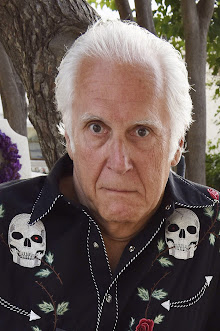Stanley - Thursday
A year ago last March, King Goodwill Zwelithini of the Zulu nation died after spending just over fifty years on the throne. He was well respected, not only in his own right, but also as a descendent of the great King Cetshwayo kaMpande, who defeated the British forces at Isandhlwana in 1879.
 |
| King Goodwill Zwelithini in ceremonial attire |
 |
| The king's "Amabutho" warriors in traditional leopard skin regalia |
Last Saturday, the new king, Misuzulu ka Zwelithini, was crowned with great pomp and ceremony and not a little controversy.
It is hardly surprising that there were other contenders to the throne since Goodwill had six wives and twenty-eight children. In terms of hierarchy, Goodwill's third wife, the late Queen Mantfombi Dlamini-Zulu, was on top of the pecking order since she also hailed from royalty. Her father was the late King Sobhuza II of Eswatini (Swaziland to those who struggle to keep up with the ever-changing map of Africa) and her brother, King Mswati III, is the reigning king of Eswatini.
 |
| Queen Mantfombi Dlamini-Zulu |
When King Goodwill Zwelithini died, Mantfombi Dlamini-Zulu was appointed regent for the three months of mourning, after which the next king would be chosen. However, she died only a month later midst allegations of poisoning.
The battle for the throne has been raging for the past year, with several of King Misuzulu's brothers and half brothers claiming the throne.
Last November, for example, the king's first-born son, Prince Lethukuthula, died in mysterious circumstances. The police believe his death to be a homicide.
However, in March this year, President Ramaphosa of South Africa formally recognised Misuzulu as the rightful heir to the throne.
One brother immediately challenged this in court, but this was dismissed.
Then, just a week before Misuzulu's traditional coronation, a small group within the royal family announced that another one of Misuzulu's half-brothers was the new king. That went nowhere.
Then three of Misuzulu's brothers announced that another brother should be the king because he had had the closest relationship with the late king. A no go also.
And finally, on the day of the coronation, two of Misuzulu's half-sisters file a motion in court to halt the coronation because they claimed that Queen Mantfombi Dlamini-Zulu's will had been forged. Not successful.
Apparently part of the original marriage contract beween Goodwill Zwelithini and Mantfombi Dlamini-Zulu stipulated that her first born would be the heir to the throne. Her will also stipulated that this agreement be honoured.
Anyway, to some extent the dust has settled, and I'm pleased to report that Misuzulu is now King Misuzulu ka Zwelithini and will be formally crowned in September.
 |
| The new king |
Last week's ceremony was the traditional investiture where thousands of people gathered at KwaKhangelamankengane Palace. There he invoked the ancestors before being announced as the new king to both the living and the dead.

Celebrating 
Celebrating 
Celebrating
King Misuzulu ka Zwelithini will be forty-eight next month. He was educated in South Africa, then Jacksonville University in the United States. He is married with two wives and three sons.
Long live the king.





























